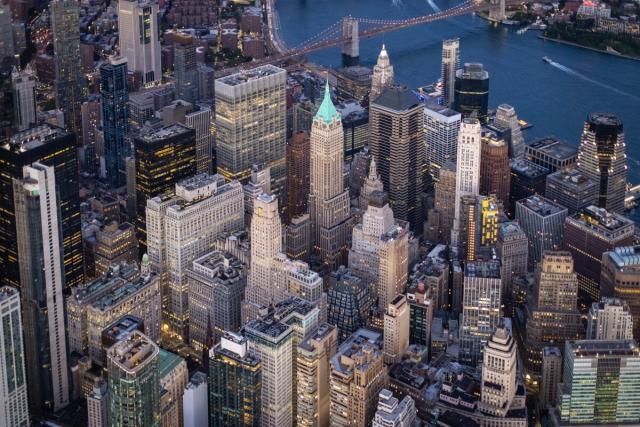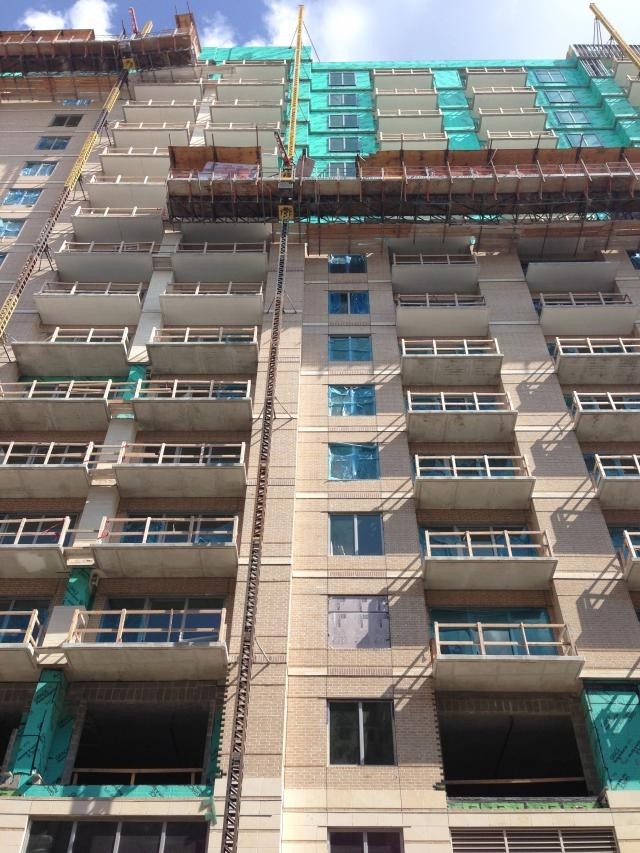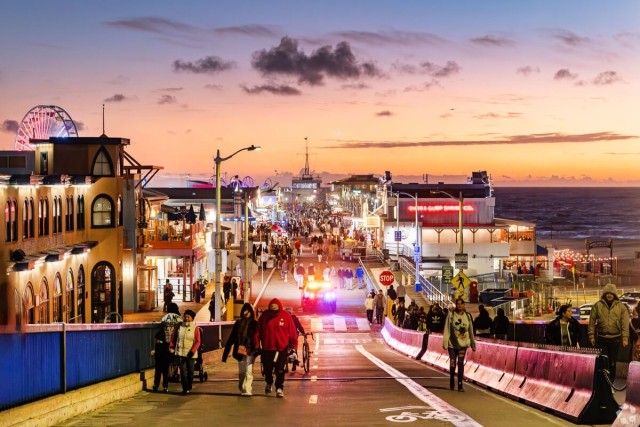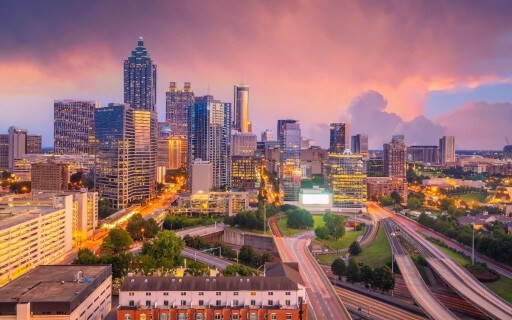When deciding whether to rent vs buy, consider the city. Some cities, like New York, have such a high average home price that buying is prohibitive to many, leading to a higher number of renters. Other places, such as Colorado Springs, have such low housing prices that buying a home is more feasible. Knowing the ratio of renters vs. homeowners in a city can help you decide between renting or owning.
The top U.S. cities with the most renters are:
The top U.S. cities with the most homeowners are:
Top U.S. Cities with the Most Renters
What makes a city renter-friendly?
One of the most significant factors that makes a city renter-friendly is the cost of living. In cities with a high cost of living, many choose to rent to save some money. Places with lower rent prices are popular for the same reason: renters want to live somewhere they can save and not spend as much on rent.
It also depends on the availability of home types. In compact and big cities, the majority of options are apartments, making the area more renter-friendly. Cities with excellent public transit and walking/biking infrastructure make it much easier for renters to get around. Many people want to live in the middle of the action, and renting in a big city is the best way to experience all the city has to offer, including local businesses, restaurants, shops, nightlife, and more.
The vacancy rate also impacts renters. The higher it is, the more apartments there are available. Higher vacancy rates mean less competition. In cities with high vacancy rates, it’s easier to find rent concessions, and it may be easier to negotiate rent prices. Cities with higher vacancy rates tend to be more renter-friendly because renters have more options.
What U.S. cities are most popular for renters?
While all cities have renters, some have way more renters than homeowners. These cities are great for those who want to rent and enjoy the conveniences available for renters.
Miami, FL
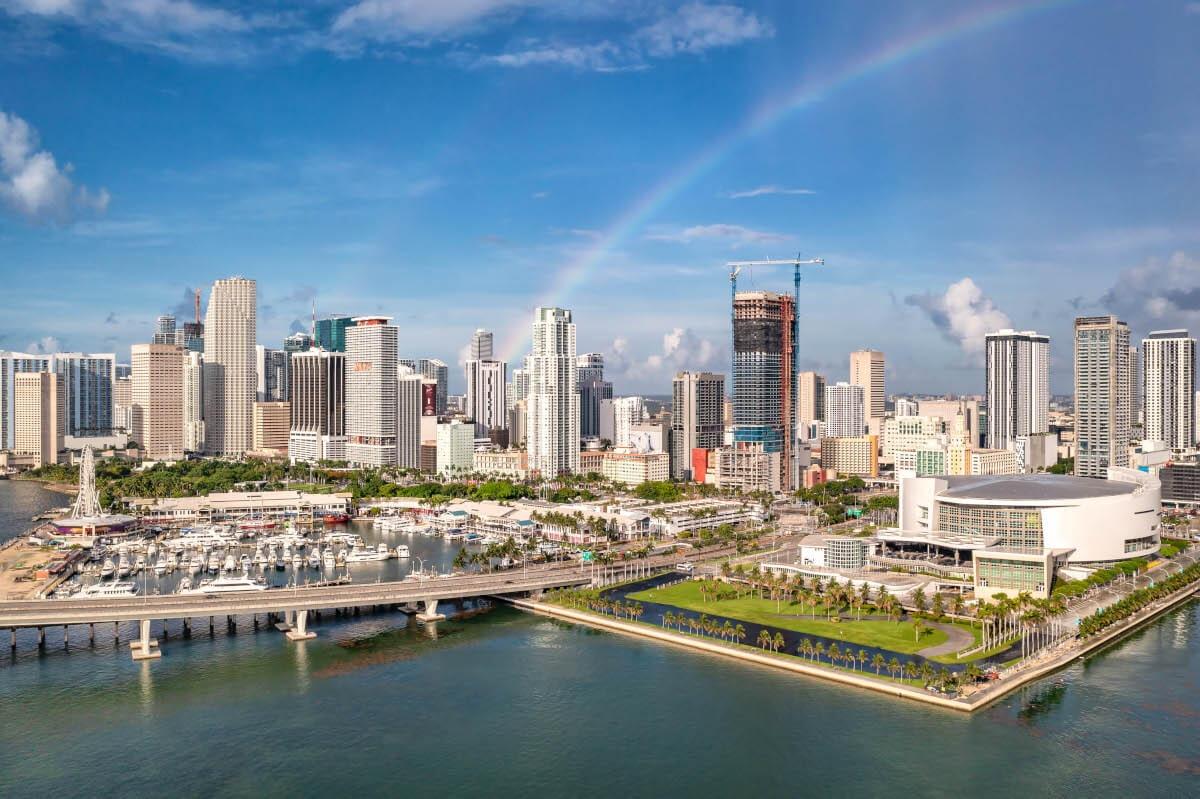
- Renter Percentage: 73%
- Homeowner Percentage: 27%
- Average Rent: $2,160/month
- Average Monthly Mortgage: $3,390/month
- Median Home Price: $649,900
- Population: 443,741
- Cost of Living Compared to the National Average: +18.7%
Miami has it all, whether you’re interested in the beach or city activities, making it a great place to live. There are plenty of neighborhoods to choose from, each with a unique vibe. You can get a luxury apartment near work in Brickell, be in the center of the action in Downtown Miami, or relax in a cozy apartment in a quieter, affordable neighborhood, like Westchester.
The vacancy rate in Miami is 6.2 percent, which is 1.9 percent lower than the U.S. average of 8.1 percent. New construction has picked up steam with many new apartments becoming available to meet the demand.
According to Apartments.com market reports, some of the most wanted amenities in Miami are a swimming pool and on-site parking. Other top amenities include water access, waterfront, hot tubs, saunas, and steam rooms.
With warm weather most of the year, walking and biking are great ways to get around Miami. For long distances, most choose to drive because public transportation is still developing. Major companies and businesses have expanded in Miami, creating jobs in finance, tech, trade, and hospitality.
New York, NY

- Renter Percentage: 71%
- Homeowner Percentage: 29%
- Average Rent: $3,954/month
- Average Monthly Mortgage: $4,570/month
- Median Home Price: $875,000
- Population: 8,039,630
- Cost of Living Compared to the National Average: +129.6%
There is always an event or celebration in New York, the city that never sleeps. Even if you live in New York your entire life, you will never run out of things to do. The compactness of New York means plenty of apartments and unique rental types, making most of the housing options multifamily. While rent is a bit expensive, it is still much cheaper than owning a home, and there are many affordable neighborhoods where you can find a deal.
The city has one of the best public transportation systems in the U.S., with the subway running 24/7 and commuter rails connecting boroughs. You don’t always have to take the subway, as walking and biking are great ways to see the sites. Manhattan is filled with skyscrapers, food trucks, company headquarters, and popular destinations where life is fast.
The key industries of New York are varied, as it boasts strong sectors across the board. Finance and tech are the biggest, but legal, healthcare, hospitality, and retail aren’t far behind.
Because of New York’s low vacancy rate of 2.7 percent, competition can be stiff when it comes to renting. People are willing to pay higher prices in order to secure an apartment. When looking for an apartment, renters look for places with a view and charming character/style. Parking and a dishwasher are also popular amenities.
Boston, MA

- Renter Percentage: 69%
- Homeowner Percentage: 31%
- Average Rent: $3,481/month
- Average Monthly Mortgage: $4,690/month
- Median Home Price: $899,000
- Population: 639,179
- Cost of Living Compared to the National Average: +45.9%
Known for being the center of major historical events, renting in Boston makes you feel like you are a part of the past and present. It is a city that is continuously growing as high-rises pop up in Downtown Boston, surrounded by museums, shops, restaurants, and big companies. Jamaica Plain is on the city's edge for a more laid-back atmosphere, with apartments being much more affordable than the houses found there.
Just across the Charles River is Cambridge, where Harvard and MIT are located. Public transit, the T, connects the two cities, so many students and those in education live in Boston. The T will also help you navigate Boston with ease, so commutes are easy. Besides education and health services, the major sectors are banking, finance, technology, and life science.
The supply and demand imbalance has equalized, and the vacancy rate has stayed at 5.6 percent for several months, making it one of the hottest rental markets in 2025. Boston renters want parking and a dishwasher in an apartment full of historical charm. Living near public transportation is highly desirable because driving around the city can be troublesome.
Los Angeles, CA
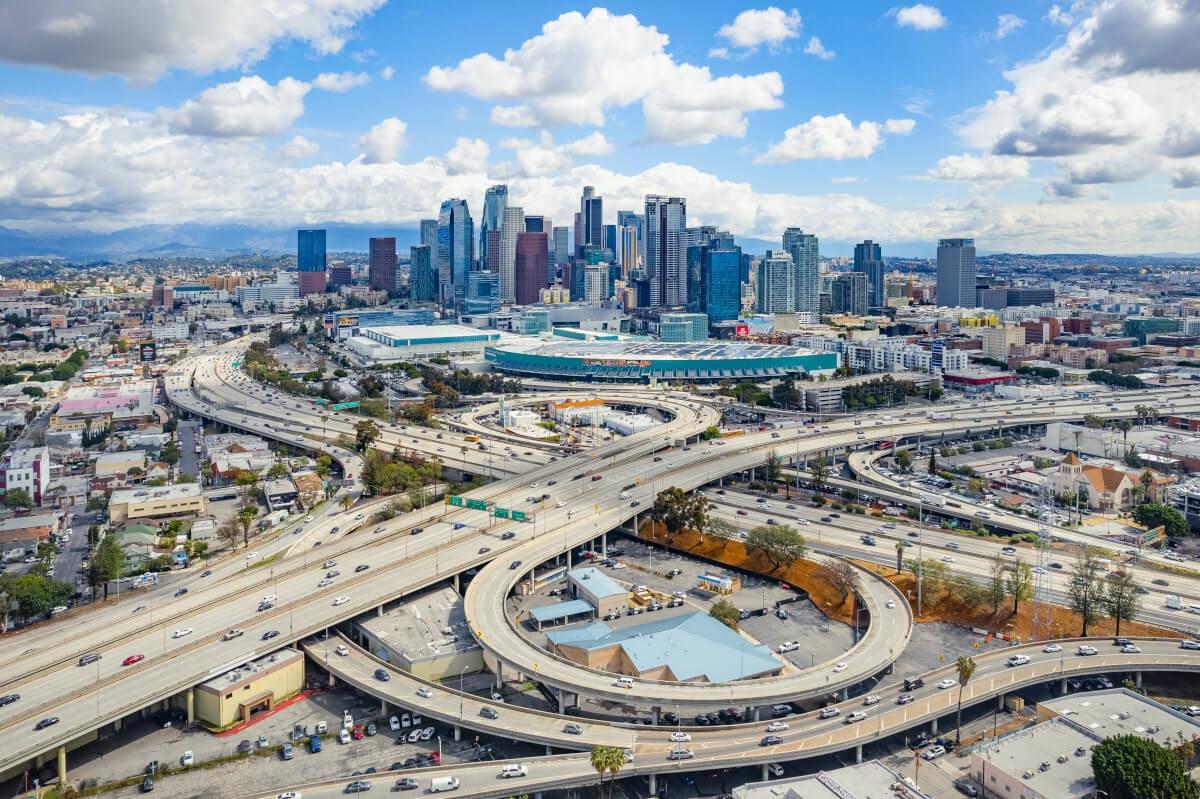
- Renter Percentage: 65%
- Homeowner Percentage: 35%
- Average Rent: $2,165/month
- Average Monthly Mortgage: $5,740
- Median Home Price: $1,099,000
- Population: 3,789,744
- Cost of Living Compared to the National Average: +50.2%
Life in Los Angeles is a celebration. There’s always an event, whether it be for sports, films, or music. Creatives are drawn to Silver Lake, with many famous actors calling it home, while those in tech or finance live in Downtown LA or Santa Monica. Relatively flat and with good weather, you can get around by walking or biking as long as it's within your neighborhood.
Los Angeles is a sprawling metropolis, so you’ll need to take the LA metro and bus system or drive to the other side. As cars are so needed in Los Angeles, parking and garages are top amenities. You’ll get a vastly different experience if you live on the beach or in the city center, allowing renters to find what neighborhood suits them best.
Many people are moving to Los Angeles as the vacancy rate has dropped to 4.8 percent. Jobs in transportation, education/health services, entertainment, and creative industries employ residents and encourage people to move to the city.
San Francisco, CA

- Renter Percentage: 67%
- Homeowner Percentage: 33%
- Average Rent: $2,999/month
- Average Monthly Mortgage: $7,050/month
- Median Home Price: $1,350,000
- Population: 777,336
- Cost of Living Compared to the National Average: +70.3%
San Francisco is a city of options, with museums, parks, beaches, music venues, art galleries, and theaters catering to every interest. As the city is famous for its Victorian and Edwardian architecture, renters want to live in an apartment with character or style. Demand continues to rise, with the vacancy rate falling to 5.1 percent, but new developments are being planned.
Huge tech companies like Uber and Salesforce reside in nearby Silicon Valley, making San Francisco a convenient place to live. The AI boom happening in the city has also drawn many professionals to the area. Even though San Francisco is full of hills, walking and biking are popular transportation options. In terms of public transit, many residents use BART (Bay Area Rapid Transit), buses, Muni Metro (light rail), or streetcars, making proximity to transit a top amenity. Finding parking can be tough in San Francisco, so many renters want an apartment community with parking or a garage.
South of Market has plenty of high-rises so that you can live next to your work, and it is still one of the more affordable neighborhoods in San Francisco. If you’re looking for a more eclectic neighborhood, check out Castro, where the fun spills out of bars, theaters, and restaurants and into the streets.
Top U.S. Cities with the Most Homeowners
What makes a city homeowner-friendly?
Just as prices can make a city renter-friendly, it also makes some cities homeowner-friendly. Home prices in homeowner-friendly cities are low, so more people can afford to buy a house.
Cities with a lot of houses and suburbs are better places to look when buying because of the higher availability. Often, what drives up the price of housing is the lack of it. The suburbs are also quieter, so they are perfect for those looking for that kind of lifestyle.
What U.S. cities are most popular for homeowners?
If you’re dreaming of homeownership, looking in a city where home prices are more affordable can help you achieve your goal. These cities are closer to or under the national median home price of $380,000 than the renter-friendly cities, making them more popular with buyers.
Mesa, AZ
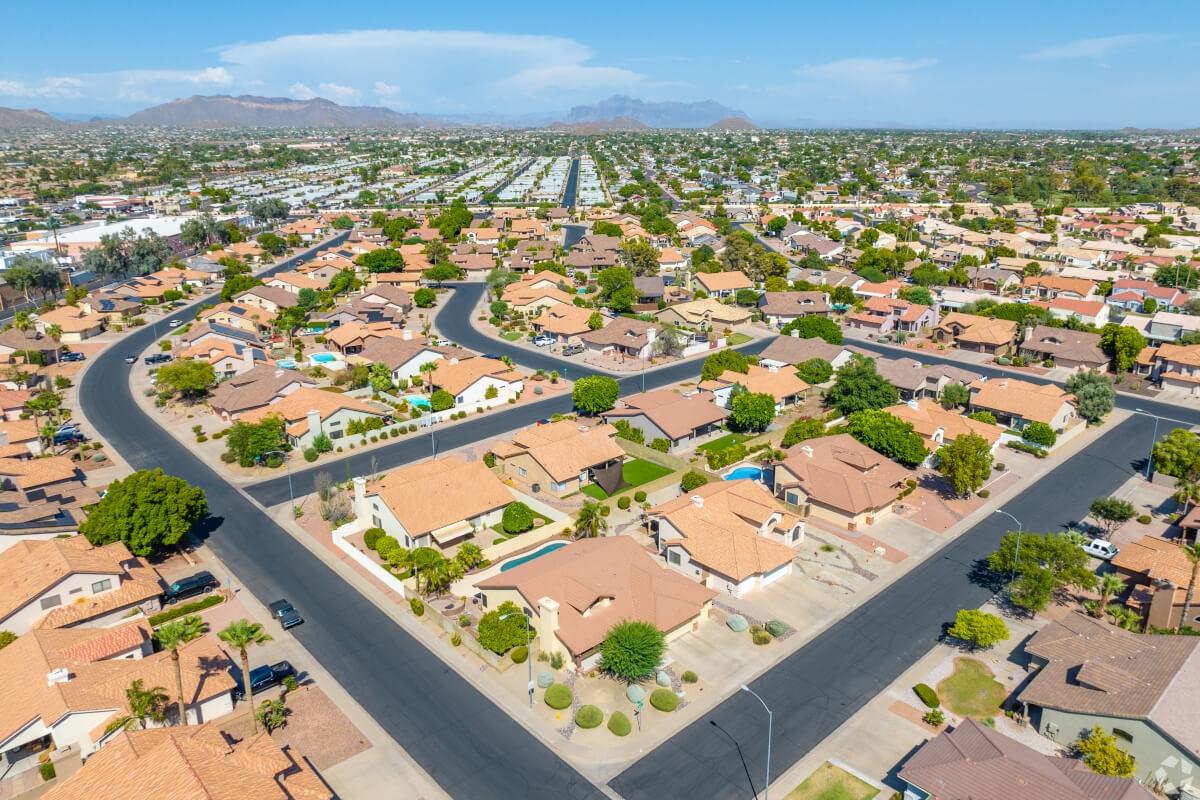
- Renter Percentage: 37%
- Homeowner Percentage: 63%
- Average Rent: $1,317/month
- Average Monthly Mortgage: $2,300/month
- Median Home Price: $440,000
- Population: 541,569
- Cost of Living Compared to the National Average: +3%
As a suburb of Phoenix, Mesa has a much calmer vibe than the lively city. Downtown Mesa is where you’ll find restaurants, shops, and events like art and music festivals. Spanish-influenced and Pueblo-style homes are organized into well-planned neighborhoods in Red Mountain.
Many residents work in Phoenix and commute by car or public transportation, like the Metro Light Rail. With affordable rent prices and lower housing costs, Mesa is a great place to set down roots. While you may choose to rent, the low home prices make buying easier. The vacancy rate is 11.3 percent, so you won’t have difficulty finding an apartment.
Albuquerque, NM
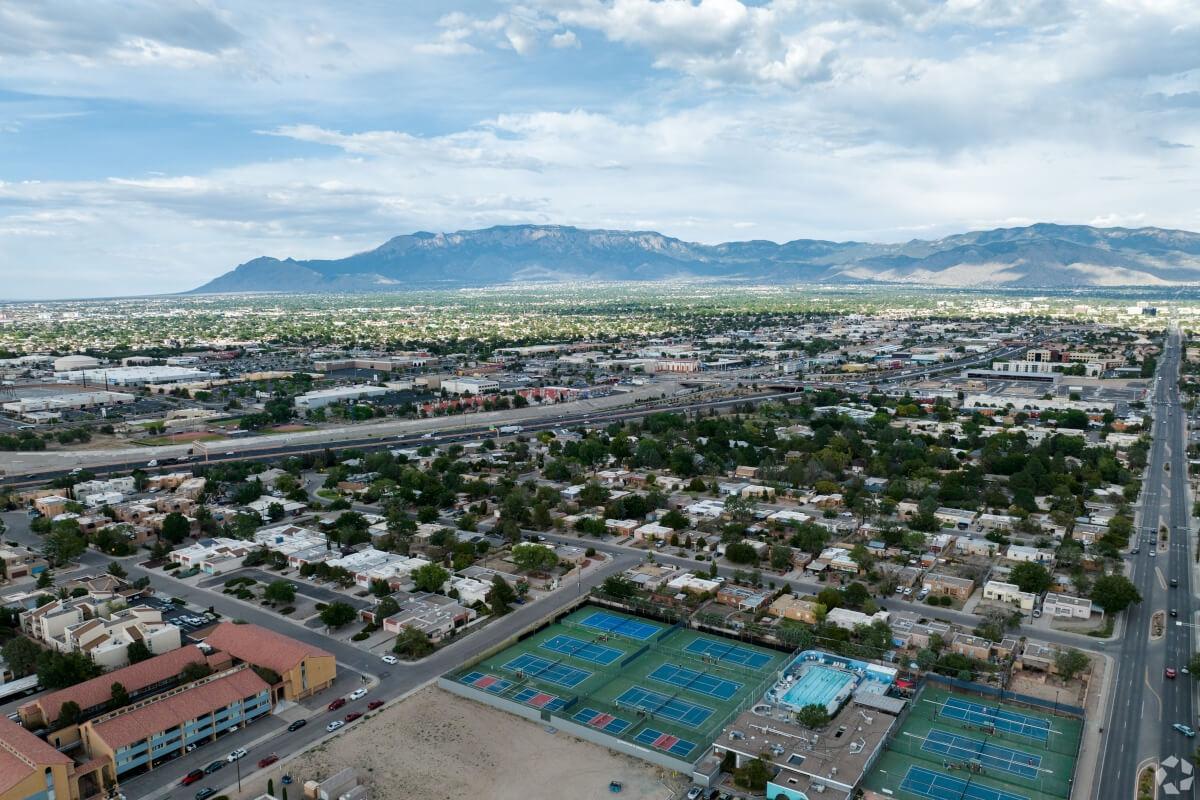
- Renter Percentage: 43%
- Homeowner Percentage: 57%
- Average Rent: $1,152
- Monthly Mortgage: $1,910/month
- Median Home Price: $365,000
- Population: 561,834
- Cost of Living Compared to the National Average: -5.6%
Albuquerque is the biggest city in New Mexico, but homeowners are still the majority of the population. The city has a laid-back vibe, perfect for those who want a slower lifestyle. Major companies in tech and entertainment are expanding in Albuquerque and diversifying the economy. However, agriculture, tourism, and manufacturing are still the biggest industries.
For such a big city, Albuquerque has a relatively low cost of living. That is one of the main reasons people move to the area, making the vacancy rate drop to 7.5 percent. As new construction continues, there is a surplus of apartments. Many landlords have turned to move-in specials and rent concessions to fill vacant properties.
Downtown Albuquerque is a bustling neighborhood with many shops, restaurants, entertainment venues, and employers. The city's history is present in the Pueblo-style homes, while its growth is reflected in the Craftsman and Contemporary residences. Northeast Heights is a suburb on the edge of the city near the Sandia Mountains. A more rural feel encompasses the Spanish Revival houses, organized into spacious neighborhoods.
Colorado Springs, CO
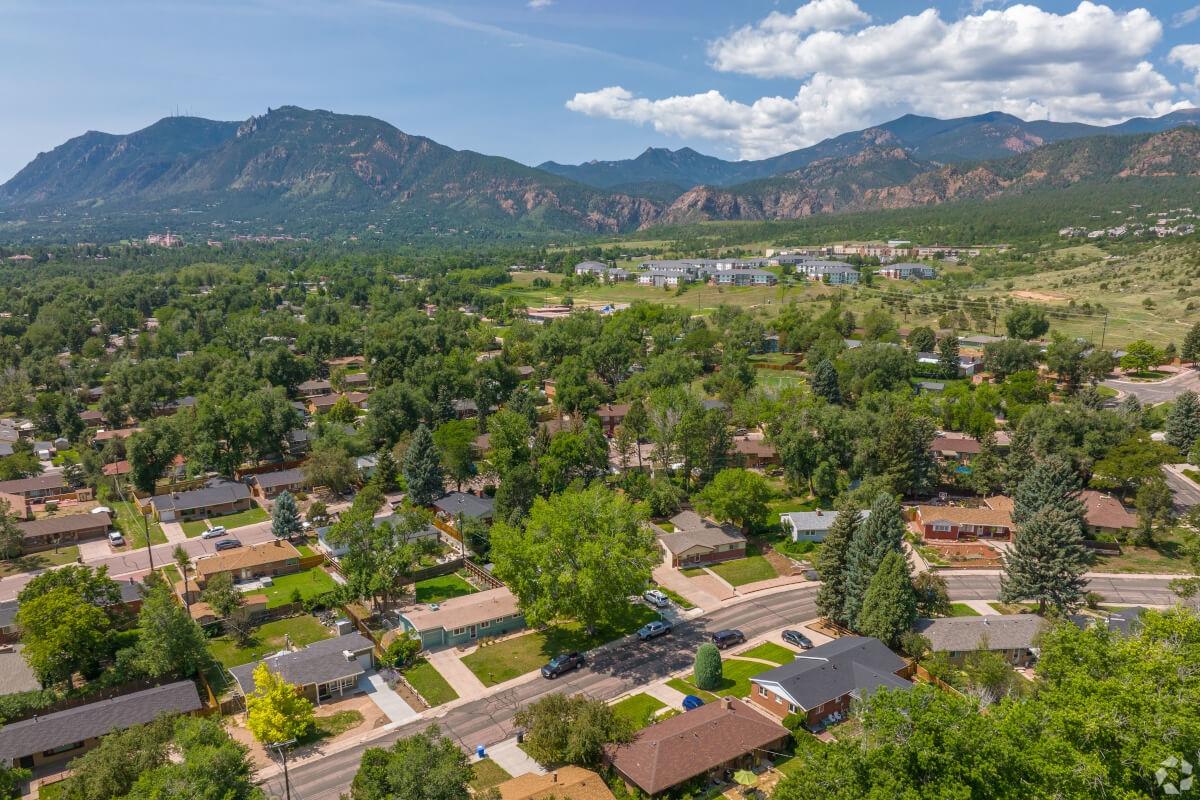
- Renter Percentage: 41%
- Homeowner Percentage: 59%
- Average Rent: $1,301/month
- Monthly Mortgage: $2,510/month
- Median Home Price: $479,900
- Population: 492,720
- Cost of Living Compared to the National Average: +4.9%
At the base of the Front Range of the Rocky Mountains, Colorado Springs has a strong arts and music community where events occur year-round. The military, particularly the Air Force, is a major employer; five military bases, three of which are Air Force, are located in the city. Other major industries include aerospace, healthcare, and manufacturing.
There has been much more supply than demand in Colorado Springs, and the vacancy rate sits at a high 12.6 percent. Construction has slowed, but there is still a surplus, meaning rent prices have stayed low and rent concessions have hit an all-time high. In fact, 56 percent of apartments in Colorado Springs offered concessions in December 2024, according to CoStar.
Downtown Colorado Springs has a high concentration of restaurants, galleries, and boutiques. Briargate is to the north, giving residents a quiet but developing suburb. Traditional and southwestern style homes are arranged into old and new subdivisions. To see which neighborhood you like the most, try renting in different ones before buying a home.
Louisville, KY
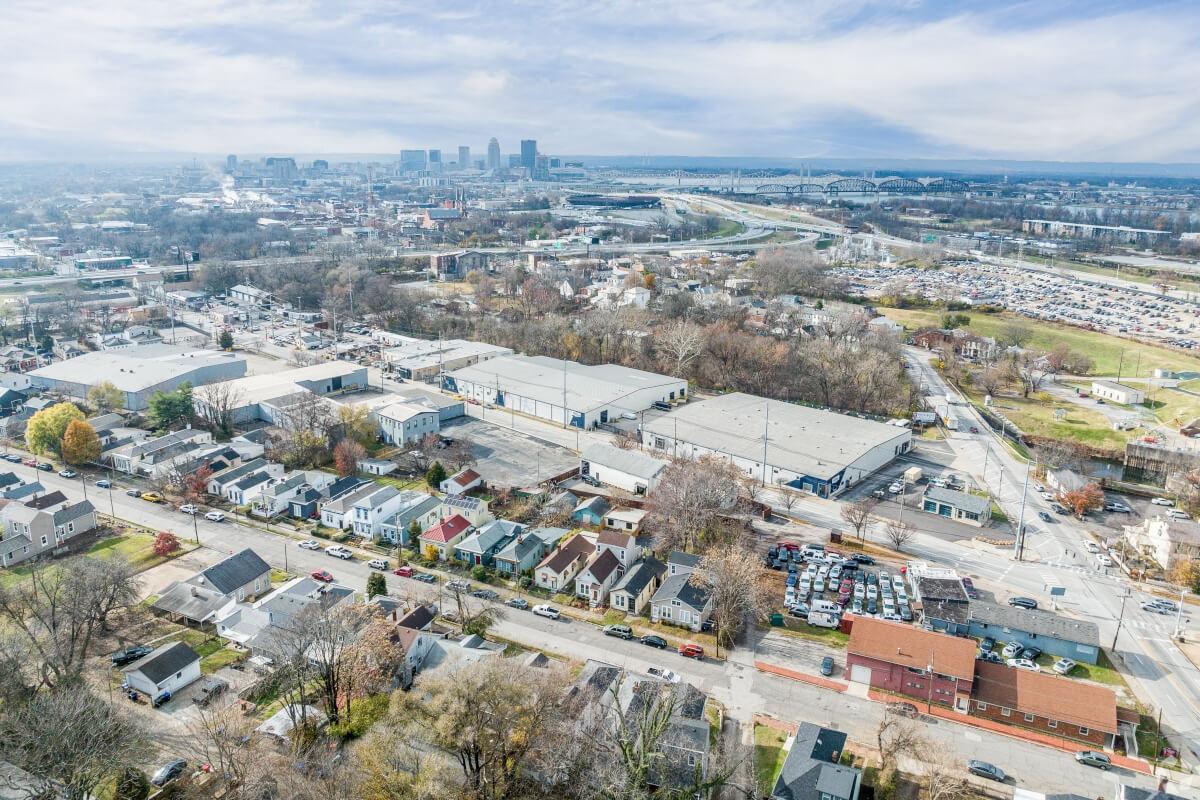
- Renter Percentage: 42%
- Homeowner Percentage: 58%
- Average Rent: $1,105/month
- Average Monthly Mortgage: $1,400/month
- Average Home Price: $269,000
- Population: 628,082
- Cost of Living Compared to the National Average: -5.5%
Now a big, welcoming city, Louisville has come leaps and bounds from its beginnings as a small town. It gets lively during music festivals, parades, and the Kentucky Derby, bringing residents together. Tourism, manufacturing, shipping, and healthcare are the backbone of Louisville’s economy. However, other industries continue to rise, like advanced manufacturing.
As new apartment communities are flooding the market, the vacancy rate continues to rise — currently it is 8.6 percent. In Downtown Louisville, you’ll find a mix of modern high-rises and quaint apartment communities interspersed with stores and restaurants. In older areas on the west side, like Portland, you’ll find historical homes, from shotgun-style to Foursquares. Community is a cornerstone in the neighborhood, with residents supporting local businesses.
El Paso, TX
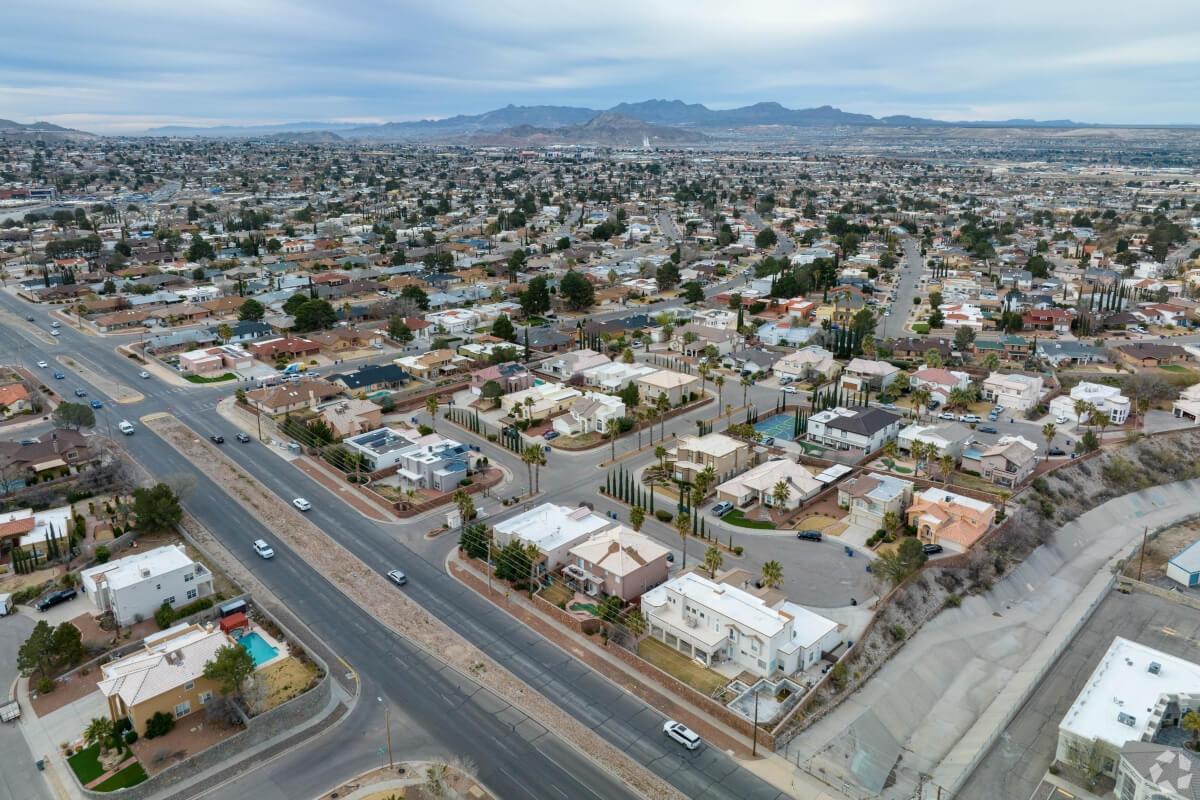
- Renter Percentage: 42%
- Homeowner Percentage: 58%
- Average Rent: $953/month
- Average Monthly Mortgage: $1,430/month
- Average Home Price: $274,500
- Population: 675,460
- Cost of Living Compared to the National Average: -11.6%
El Paso honors the past while continuing to move towards the future with museums, landmarks, and cultural attractions. The Rio Grande serves as the border with Mexico and is also a means of entertainment, where residents can kayak, fish, and go whitewater rafting. The low cost of living attracts both renters and homeowners to the city. The Sun Metro bus system runs through the city, but many choose the convenience of driving.
Even though El Paso is a key location for the logistics, trade, and government industries, it has not seen the wave of new construction that other cities have experienced. The vacancy rate is 7.1 percent, and most of the communities on the market are existing ones. Rent prices have remained consistent because of this.
Sunset Heights is one of the oldest neighborhoods in El Paso, full of American Foursquares and Tudor Revivals that have been carefully preserved. A little to the east is Downtown El Paso, which has become a commercial hub full of shops, hotels, and restaurants. With a view of the Franklin Mountains, Northeast El Paso has suburban neighborhoods tucked up against parks in a quiet package.
Rent vs Buy Factors

Whether to rent or buy is a decision many people face, especially if they are moving cities. You need to consider several factors, including non-monetary ones, which could influence your decision.
Price
Home prices vary significantly depending on the city. While they may be close to the median home price of $380,000 (according to Homes.com) in some cities, it can cost millions to buy a house in others. No matter the city, many residents choose to rent because it is usually more affordable than buying.
The price, whether rent or mortgage, needs to align with your budget so that you can live comfortably on your income. In addition to the mortgage, homeownership comes with additional expenses like upkeep, property taxes, and home insurance.
Flexibility
While homeownership is a dream for many people, some don’t like being tied to a long-term mortgage. They want the flexibility of renting because they can move or stay once their lease is up. They may want to move to follow job opportunities or experience a different lifestyle.
Amenities
Apartment communities generally offer more amenities than a house. You can enjoy a pool, gym, car wash, tennis court, and dog park all in your community. With a home, your neighborhood might not have these amenities.
Proximity
Many cities have compact downtowns full of businesses, restaurants, shopping, and more. The only way to be near all this action is to rent, as not many houses are built in city centers because they take up a lot of space. Whether you want to have a night out near your home or be able to walk to your job, apartments can put you close to it all.
Lifestyle
If you want a lively lifestyle close to the action, an apartment can put you in the heart of a big city. However, if you want a quieter atmosphere with a slower pace of life, finding a house in the suburbs might be more your style.
Compare the Average Rent in the US on Apartments.com
If you have decided to rent, look at the rent trends in the US to see which cities are the most expensive or the most affordable on Apartments.com. You’ll also get the average for each of the floor plan types: studio, one bedroom, two bedrooms, and three bedrooms. Check out the cost of living in the city so you have all the information you need. Find a city that fits your budget on Apartments.com!
Methodology
Rent and cost of living data are from the Apartments.com Rent Trends pages and Cost of Living Calculator. Additional data was sourced from CoStar, including median home prices, renter/homeowner percentages, and vacancy rates.
FAQs
What are the pros and cons of renting vs. buying an apartment?
While most rent apartments, you can buy one too, but each option has pros and cons. Renting means you don’t have to deal with ownership responsibilities, maintenance, or taxes and can enjoy the flexibility that comes with it. However, you are limited in how you customize your apartment and aren’t building equity.
What is rent-to-own?
Rent-to-own is a rental contract that gives tenants the option to buy the property they are renting before the lease term ends. It is pretty similar to standard leases but includes a predetermined price and timeline.
What are the most popular types of apartments?
There is no one particular type of apartment that is most popular, what renters care most about is the price. However, co-living has risen as this helps renters in cities with high rents live affordably. Many cities are trying to encourage office-to-residential conversions to co-living to help create more housing.


